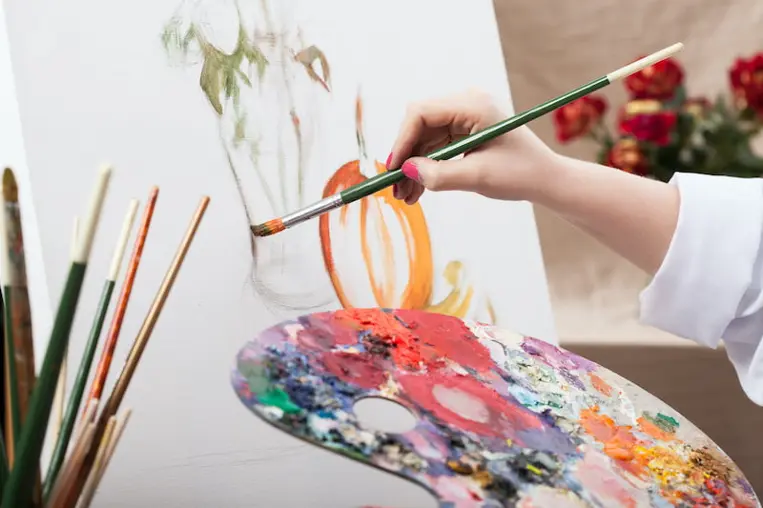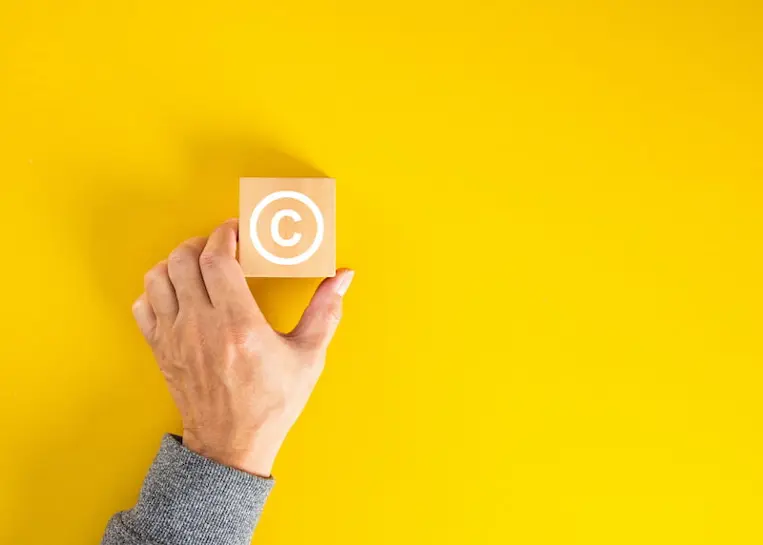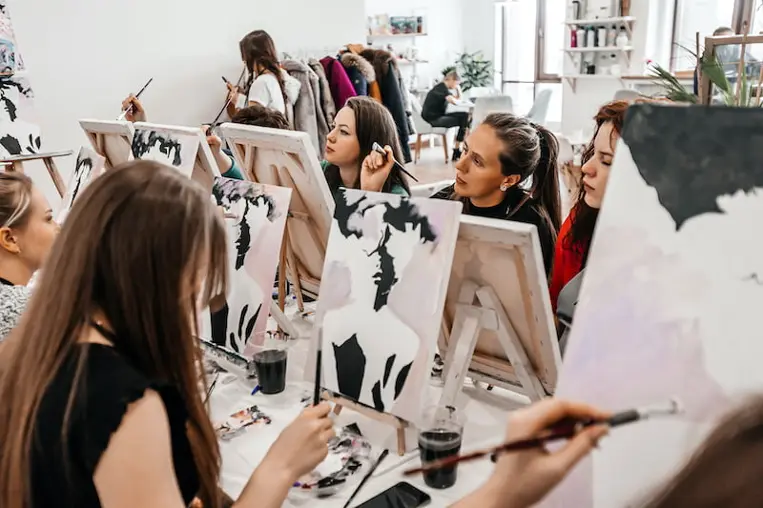Copyright is a form of legal protection provided by U.S. Law to the creators of "original works of authorship" that are fixed in a tangible form of expression.
Put another way, U.S. copyright law applies to your work the moment you set down your pen or put away your paintbrush, as doing so would fix your work in a "tangible form of expression."
However, while copyright law applies to your work immediately upon completion, actually enforcing those rights, and protecting your copyright, is neither automatic nor guaranteed.
For this reason, copyright holders will often employ a variety of strategies to protect their works from cases of infringement or plagiarism.
In this article we'll explore seven of these strategies in more detail while paying particular attention to how artists, authors, and business owners can protect their rights to their content.
1. Register any Significant Work with the U.S. Copyright Office
The fastest and strongest way to protect your copyright claim over a particular work is to register that work with the U.S. Copyright Office.
Note, however, that formal registration is not a requirement for a work to be protected under current copyright law.
Instead, registration is a mechanism that allows copyright holders to enforce their rights in court, among other benefits.
Or, put another way, registration is a necessary prerequisite to an infringement lawsuit, but it does not, by itself, provide any automatic enforcement effects.
Instead, you'll have to police your content yourself.
For example, consider the following situation:
Example: An artist paints a picture of a mountain and posts that image online. Someone takes his image and, without his permission, begins to sell prints of the image on their online store. The artists finds out and decides to sue the other party for copyright infringement.
The manner in which this infringement case plays out will depend greatly on whether or not the artist chose to register his work as a copyright before or after the instance of infringement took place.
For example, the law states that copyright holders can only include statutory damage payments in their copyright infringement claim if they've previously registered their work with the U.S. Copyright Office, or if they register their work within a month after learning of the instance of infringement.
Individuals who failed to register their work in this time frame, on the other hand, can only claim actual damages and any profits gained by the infringing party.
This fact is important because statutory damage payments can range from between $750 and $30,000 per copyrighted work that was infringed.
In especially egregious cases, this number can even include damages of up to $150,000 per infringed work.
Combined with other benefits such as (1) the presumption of the copyright owner's validity in litigation, (2) the creation of a "public record" of the copyright owner's claim, and (3) various Customs and Border Control protections to stop infringing works for entering the country, these protections form the backbone of any copyright protection portfolio.
2. Use the Copyright Symbol (©)
As we noted above, registration with the U.S. Copyright Office and aggressive enforcement in court are the most effective ways to protect your copyright from instances of infringement.
However, another important step you can take is to display the copyright symbol (©) prominently on any work that you're claiming ownership over.
This advice applies equally for registered and unregistered works, as the public display of the copyright symbol simply implies that the owner is proactively asserting their rights over the content in question.
Often, this symbol is combined with the the name of the creator or business who owns the copyright, as well as the year that they are claiming ownership.
You can find examples of this at the bottom of almost every website on the internet, as the owners of these websites are claiming copyright protections for all of the content they create and publish on their sites.
Finally, remember that adding the copyright symbol to your work is not a legal requirement for copyright registration (though it used to be).
Instead, it's simply a claim of ownership over the particular work in question.
3. Learn the Limits of Your Copyright
Copyright protections can be helpful, but are not absolute.
In fact, there are a number of ways to use copyrighted material without infringing on the rights of the copyright owner.
Most commonly, these cases fall under the doctrine of fair use.
Fair use is a legal doctrine that promotes freedom of expression by protecting certain unlicensed uses of copyright-protected works.
Specifically, it provides a legal defense to the defendant in copyright infringement cases that center on certain "permitted" uses of otherwise protected works.
Courts will specifically look for four factors when determining whether the use made of a work is fair use:
- The purpose and character of the use, including whether such use is of a commercial nature or is for nonprofit educational purposes;
- The nature of the copyrighted work;
- The amount and substantiality of the portion used in relation to the copyrighted work as a whole; and,
- The effect of the use upon the potential market for, or value of, the copyrighted work.
Importantly for this article, your copyright claim does not prohibit instances of fair use that meet any of these factors.
For example, it might be difficult to win a copyright infringement claim against a teacher who prints out short excerpts of your book for their students, as the teacher could likely make a claim for fair use in court.
The same is true for instances of criticism, comment, news reporting, scholarship, and research, as all of these activities make use of the material in a fundamentally transformative or insignificant way that does not impede on the potential market for the original work.
Finally, note that fair use is determined by the courts on a case-by-case basis. For this reason, only the specific judge in your case can determine whether or not a particular case of infringement falls under fair use.
Notable Copyright Protections
As you might imagine, fair use laws are vague by design to create a grey area in which artists and other creators can use otherwise protected works in new and inventive ways.
For this reason, it's wise to educate yourself about what your copyright actually protects.
Notably, current legislation provides the copyright owner with exclusive rights to:
- Reproduce the work in copies and other formats;
- Prepare derivative works based on the original work;
- Distribute copies of the work to the public by sale or other transfer of ownership (as well as by rental, lease, or lending);
- Perform the work publicly if it is literary, musical, dramatic, or choreographic (or to show the work publicly if it is a motion picture or other audiovisual work);
- Display the work publicly if it is a literary, musical, dramatic, choreographic, pictorial, graphic, or sculptural in nature (or to show the work publicly if it is an individual image of a motion picture or other audiovisual work);
- Perform the work publicly by means of a digital audio transmission if the work is a sound recording.
Finally, copyright ownership also allows for the right to authorize others to exercise these exclusive rights, subject to certain statutory limitations.
For example, the copyright owner can permit a specific instance of use (or multiple instances) depending on the factors of the case.
You'll see this most often on social media when one party asks a copyright holder for permission to use their work in some other work, such as a news story, podcast, or other form of expression.
4. Learn What Copyright Doesn't Protect
With the contexts of the previous section in mind, it's also important to understand what copyright is not, as well as what copyright law does not protect.
Specifically, copyright law does not protect:
- Ideas, procedures, methods, systems, processes, concepts, principles, or discovers (which are normally protected under patent law);
- Words that are not fixed in a tangible form, such as improvised choreography or speech that is not fixed in a tangible medium such as audio or film;
- Titles, names, short phrases, slogans, symbols, or designs (which are normally protected under trademark law);
- Basic typographic variations of other works, such as if you adjust the ornamentation, lettering, or coloring of a work;
- Basic listings of ingredients, processes, or contents (such as in the case of general or basic recipes).
Put simply, there are several different types of intellectual property law (copyright, trademarks, patents, and trade secrets) and copyrights cannot protect things which fall into one of the other categories.
In this way, it's important for you to contextualize your copyright in the broader space of intellectual property law.
Creating a podcast about owls called "The Hoo," for instance, may lead to copyright protections for the work as a whole.
However, you may also have to register your new podcasts's name as a trademark to gain protections for that particular phrase.
5. Make it Easy for People to Contact You
As we mentioned above, an easy way to prevent others from infringing on your copyright is to make it easy for them to request permission.
While it's common for artists or writers to ask for permission on social media platforms such as Twitter, it's also wise to make it easy for people to contact you directly through a public email address or Contact form on your website.
Redistribution and engagement with your work can be great for you, your business, or your brand.
These are actions that can be easily facilitated and controlled through a contact link or form.
Additionally, this can be very easy to do.
As it is becoming the standard for all types of businesses to have a website, this would be a natural place for a contact form or link.
Or, for works that are distributed in hard copies, you can add an email, phone number, or link somewhere on or accompanying the work.
Ease of access will also will help your case in any potential future infringement trial, as you can show that the defendant must have ignored the legitimate avenue for requesting permission before they wrongfully infringed on your work.
6. Clarify Copyright Ownership in Your Business
If you're a business owner who's curious about how you can protect your business's assets, you should take steps to clarify the ownership of any copyrighted material you use as a part of your business.
For example, many businesses will hire people to create content for their business as a part of their job, either as direct employees or in a work-for-hire relationship.
As a term for this arrangement, many businesses will include language in the employment contract which states that the business is the sole owner of any content created by the worker while performing their job.
If, for example, such a worker reuses this content in a different capacity later (such as for their own personal venture) without the permission of the business, the business may have a case for copyright infringement.
For this reason, it's essential for all business owners to include language in their employment contracts that states that any original work produced as a product of an employee's employment (or as a result of a "for hire" relationship) is the sole property of the company, and that the creator does not retain creative authorship over it.
These contracts can be especially helpful when there is a high chance that the employee may create work that wasn’t assigned but was highly lucrative.
In these instances, the employee would have no legal right to take their new work and create a pursuit of their own, since they signed a contract that gave the company ownership.
7. Speak with a Copyright Attorney
Research can be helpful, but it's always best to bring any specific questions you might have about the copyright process to an experienced intellectual property attorney.
If you believe you've been the victim of copyright infringement, or if you're wondering how you can best protect your art from potential plagiarism, your best option is almost always to speak with an attorney about your case.
However, even without speaking with an attorney you can still take steps to protect your content by following the best practices we discussed above.
It's simple to register, research, and maximize your protections, and doing so can make all the difference to artists, content creators, and entrepreneurs who are just getting started.
If you have any questions about copyright law, or about protecting content that you've already created, please feel free to reach out to our firm at (804) 477-1720 to schedule a consultation.






